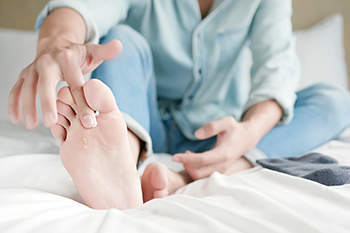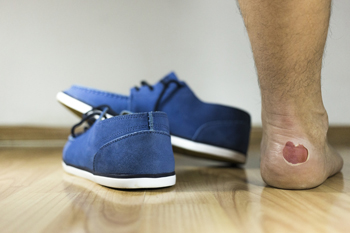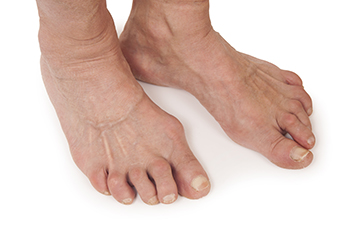
One of the most common complaints of heel pain comes from a condition known as plantar fasciitis. The plantar fascia is a wide band of tissue that runs from the toes to the heel. The main cause of plantar fasciitis is the degeneration of collagen in the area where the plantar fascia connects to the heel bone. The main function of the plantar fascia is to provide support for the arch and absorb pressure in the heel from prolonged standing, walking, or running. Symptoms are usually felt first thing in the morning after sleeping. Pain and stiffness develop and will generally get worse later in the day. Being overweight and overtraining are the two major causes of plantar fasciitis. People who have flat feet or high arches are also at further risk of developing plantar fasciitis. Rest, stretching and strengthening exercises are the best treatments for plantar fasciitis. A change of footwear that offers more cushioning and fits well, in addition to wearing custom orthotics, are other treatment options. For more information on managing plantar fasciitis, it is suggested that you make an appointment with a chiropodist.
Plantar fasciitis can be painful and interfere with your daily activities. If you are experiencing foot or heel pain and believe you may be afflicted with plantar fasciitis, please consult with one of the chiropodists from The Footcare Centre. Our chiropodists will assess your condition and provide you with quality foot and ankle treatment.
What Is Plantar Fasciitis?
Plantar fasciitis refers to the inflammation of the plantar fascia, a ligament that runs along the bottom of the foot and connects the heel bone to the toes. Repetitive activities, such as running or jumping, can injure the plantar fascia over time. Plantar fasciitis can also be caused by flat feet, high arches, pregnancy, and activities that put excessive pressure on your feet, like standing all day for work. When the plantar fascia becomes inflamed, it causes pain and discomfort.
Symptoms
Typical symptoms of plantar fasciitis include:
Stabbing pain near the heel
Pain that is worst in the morning or after a period of rest
Pain that increases after exercising
Swelling
Tightness in the Achilles tendon
Diagnosis
Plantar fasciitis is typically diagnosed via medical history and physical examination.
Treatment
Treatments for plantar fasciitis include resting and icing the affected foot, stretching the foot, taking medications to reduce inflammation, and wearing orthotics. In severe cases where pain does not improve with conservative treatments, injections or surgery may be recommended.
If you have any questions, please feel free to contact our office located in . We offer the newest diagnostic and treatment technologies for all your foot care needs.





